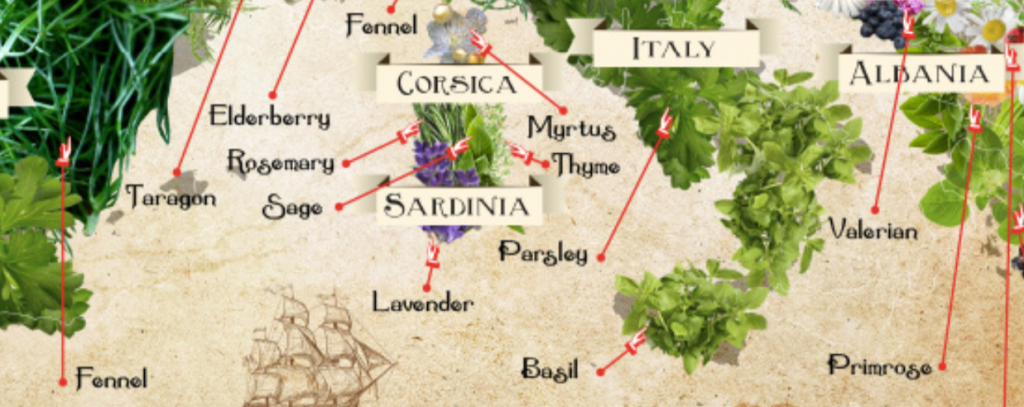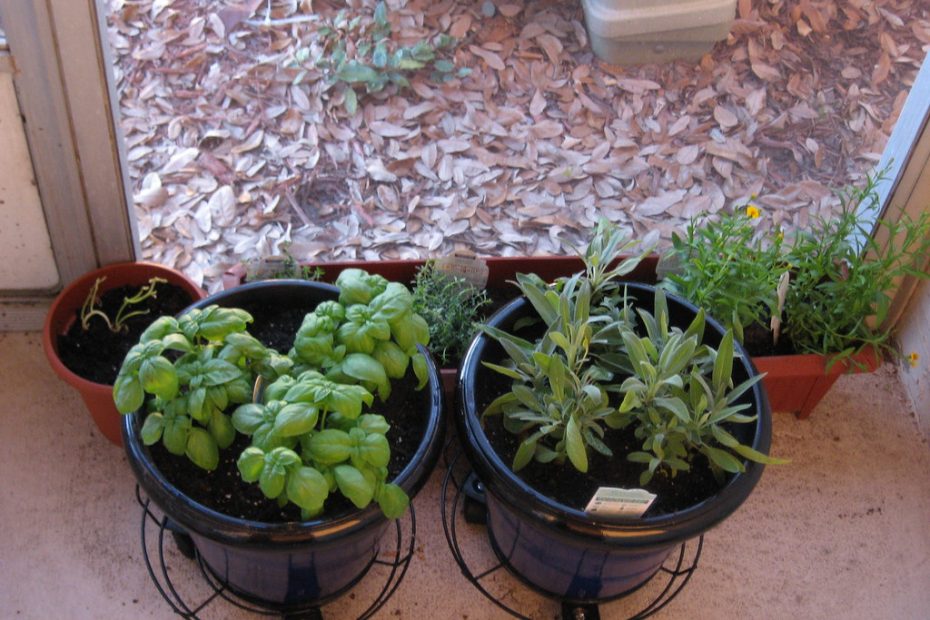When planting herbs or placing them along my window sill I often wondered if they needed full sun every day. Since every herb prefers slightly different conditions the answer was not as straightforward as I expected. But here is what I found: do herbs need full sun?
Most herbs thrive in full sun. 6-8 hours of direct sunlight per day is ideal for herbs like basil, oregano, and thyme while other herbs such as chives, coriander, and parsley can do well with just 4 hours of sunlight per day.
In this post, we’ll take a closer look at each of these herbs to see how much sunlight they actually need. I’ll show you a quick and easy method to determine the best conditions for each herb to grow by looking at their native habitat.
Do herbs need full sun?
Most herbs need a lot of sun to grow strong and flavorful. However, all herbs have evolved and are native to very distinct climate conditions and varying hours of sunlight. In order to figure out how much sun each herb needs it therefore makes sense to look at environments where they thrive naturally.
| Full Sun | Partial Sun |
| Basil | Chives |
| Oregano | Parsley |
| Rosemary | Cilantro |
| Tarragon | Wild Bergamot |
| Thyme | Lemon Balm |
| Lavender | Dill |
| Fennel | Caraway |
| Valerian | Southernwood |
| Primrose |
I’ve found this amazing map by Earthly Mission which shows each herb’s native habitat by European origin. If we look closely at the climate in each region we can easily determine if a herb will do better in full sun or in moderate sun.

Starting from south to north you’ll find herbs like basil, oregano, and thyme in places like Sicily, southern Spain, and Turkey. These climates tend to be drier with full direct sunlight. Further up north, we find parsley, coriander, and dill more frequently. Thus, these herbs do best in the wetter and cooler climates of the United Kingdom, Germany, and Denmark.
It is worth pointing out, however, that all herbs need some direct sunlight to grow. Even though there are herbs growing in the northernmost regions of Europe such as Iceland, Sweden, or Norway these plants tend to grow strongest in the summer month when there is plenty of natural light around the arctic circle. Sometimes up to 16 hours per day!
But how do we make use of this knowledge in our own herb garden? Surely, it’s impossible to replicate the perfect condition for each herb to thrive in our backyard.
Should herbs be planted in full sun?
Most herbs do best in full sun. This means they should be planted in a spot where they get at least 6 hours of direct sunlight per day. However, many herbs tolerate or may even do better in 8-10 hours of sunlight.
The best way to think about planting herbs is to consider the minimum requirements that all herbs need to survive and then add other ingredients to boost the growth of some. For instance, all herbs need at least 4 hours of partial sun to grow but basil will grow even stronger with 8-12 hours of direct sunlight.
With that said, here are some things all herbs need to grow:
- Nutrients: All herbs require nutrients to grow new leaves for photosynthesis. These nutrients can be derived from nutrient-rich soil, fertilizers, or other water-based systems (hydroponics). Making sure your soil/water is nutrient-rich will be the first step in ensuring the growth of all herbs.
- Sunlight: All herbs need some sunlight. The minimum amount of direct sunlight you should take into account when planting your herbs is 4 hours. With 4 hours of sunlight, all herbs will grow but not all will thrive. Use the map above as a reference for each herb’s sunlight requirement or check the lists I have compiled below.
- Drainage: If excess water is not drained from the soil mold can form and the herbs’ roots may die off. Plant your herbs where the rainwater easily drains into the ground. A good way to check this is to go outside after heavy rain and look for spots in your garden where there is little moisture in the soil.
If herbs do not have these basic requirements above they may grow weak and nimble and not fully develop. They can also develop a flat or even bitter taste. Full sun helps herbs develop their full natural flavor profile.
What herbs grow best in full sun?
Herbs native to the southern regions of Europe grow best in full sun. These herbs include basil, oregano, rosemary, thyme, fennel, and lavender.

- Basil: This delicious flavorful herb with savory green leaves is used primarily in Italian cuisine. Growing plentiful in southern Italy and Sicily it is accustomed to receiving up to 12 hours of direct sunlight and hot to moderate climate conditions all year round.
- Oregano: Oregano is a herb that grows wild and in abundant quantities in places such as Greece, Turkey, and Albania. It enjoys a Mediterranean climate of lots of sun and moderate seasons.
- Rosemary: This herb with flavorful small leaves is often used in seasoning meats or vegetables. It unfolds its full flavor with full sunlight for at least 10 hours per day in warm to hot climates. It is commonly found in Sardinia year-round.
- Thyme: Although thyme is spread across the entire European continents it also prefers full sun. However, it also grows in milder climates of central Europe but still requires at least 8 hours of direct sunlight per day to grow strong.
What herbs don’t need full sun?
Herbs that are native to central or northern Europe such as the United Kingdom, Germany, or Denmark do not need full sun but do require at least 4 hours of direct sunlight. These kinds of herbs include chives, parsley, coriander, and dill.

- Chives: Chives are commonly found in moderate climates of central Europe such as Germany and Denmark and don’t necessarily need full sun. They can do well in partial sun of 4-6 hours of direct sunlight per day. Some varieties may also grow in light shade.
- Parsley: Another herb that grows naturally in cooler climates with less sun is parsley. Full sun is not a necessary requirement for flavorful parsley leaves and strong stems. With moderate sun exposure between 4-8 hours per day, parsley will do just fine!
- Coriander: Coriander or cilantro can actually thrive in a wide range of climates and sunlight. Growing wild in the UK it can easily deal with cloudy and wet days with only partial sun. However, getting up to 8-10 hours of sunlight occasionally can boost coriander growth.
- Dill: Famously used in many potato salads, dill is native to Germany, Poland, and other central European countries and as a result, it has become accustomed to only sparse bursts of full sun exposure.
Conclusion
Most herbs will do best in full sun but it’s not a requirement for all. When planting your just make sure they will get at least 4-6 hours of direct sunlight.
Just be aware that some herbs like basil, oregano, and thyme may not do as well without full sun throughout the day.
“Full Sun” by WaveBreaker is licensed under CC BY-ND 2.0
- Are Herbs Perennial? - January 29, 2021
- Can Herbs Survive Winter? - January 28, 2021
- Can Dogs Eat Herbs? - January 27, 2021
